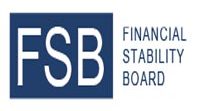The Financial Stability Board released today a preview of an upcoming document on collateral use. The current document, “Transforming Shadow Banking into Resilient Market-based Finance: Possible Measures of Non-Cash Collateral Re-Use,” works on potential methodologies for measuring collateral re-use eligibility, also known as Collateral Velocity. Our notes on the document are below.
What should be the scope of data collection?
• Scope restricted to SFTs (Scope A): In line with the scope of the global securities financing data standards, the scope is restricted to collateral posted or received and subsequently re-used in SFTs. Although collateral re-use may also occur with other types of transactions, the available evidence from the EU8 for example suggests that a large proportion of collateral re-use is currently occurring via SFTs.
• Scope extended beyond SFTs (Scope B): To fully capture collateral re-use, other types of transactions (e.g. trading of OTC derivatives) beyond SFTs may be considered. Compared to Scope A, this approach may prove more complex and costly for entities involved, requiring a longer time to implement the reporting of additional data items.
The FSB leans towards Scope A. This makes sense from the point of view of managing complexity but misses the point that there is an increasing amount of cross-product collateral analysis and utilization going on in the market.
Three possible measures for data collection
1) An exact measure of collateral holdings submitted by banks
2) An approximate measure of collateral holdings submitted by banks
3) An approximate measure of collateral holdings based on indirect data points already incorporated in the FSB data standards for Securities Finance Transactions.
The three measures are not comparable and will yield different results.
Six collateral re-use metrics
1) Collateral re-use at the jurisdiction and global level
2) Collateral re-use rate
3) Re-use reliance rate
4) Concentration of re-use activities
5) Collateral circulation length
6) Collateral multiplier (at the global level only)
The remainder of the document deals with the specifics of data elements and submission.
The full report is available here.


